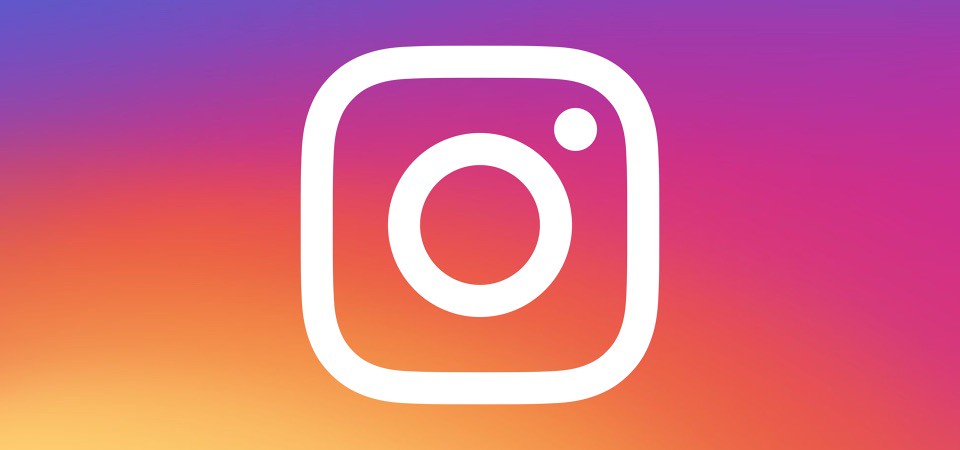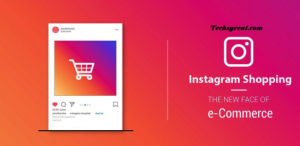
By Lytia Heng, Group #6
“Post, like, comment and repeat…”
Instagram is a content-related platform business that is owned by Facebook and was developed by Kevin Systrom and Mike Krieger who are both American computer programmers and entrepreneurs. The main goal of Instagram is to provide users with a media outlet to allow for creative freedom, social interaction through technology and most importantly, to be able to post photos and videos at the touch of a button. This essay will aim to provide general background information and a basic guide on how Instagram is used. Then, it will discuss what led Instagram to its popularity and success, which later caused an influx in profit for the company. And finally, we will address the criticisms that have arisen from Instagram users which include, but are not limited to, scamming, bullying and breach of privacy.
What is Instagram?

Instagram is essentially a photo-sharing site that allows users to promote, engage, inspire and interact with an audience (Humphrey, 2016). It is widely popular among the teenage demographic, but as society progresses, more people have been able to access and operate Instagram as an application. The platform business was created in 2010 by Kevin Systrom and Mike Krieger as their intention was for people to share aesthetically pleasing photos with others. As Instagram was the only app that allowed effects and filters to be applied to photos, this created a unique and personalised way of presenting content and this is why Instagram became so popular. With all the positive feedback they received from users, Instagram began to evolve into a useful and creative space for everyone, especially for marketing and business owners. Statistics show that “82% of Instagrammers surveyed in Australia say they are open to discovering new brands or products on the platform” (SMPERTH, 2021). Therefore, one can see that Instagram is a smart and successful tool that can be helpful for small business owners to promote their products or services to consumers.
A simple guide on how to use Instagram

Creating a post
A post on Instagram can be in video or photo form and is uploaded to your Instagram feed. It allows users to share posts with their friends or the public about their passion, current feelings, interests and more.
Like and comment
It is very common for social media companies to have a “like” and “dislike” button. But Instagram adopts an “only like button” as it creates a positive and supportive dynamic for users as it is a way to cancel out any negativity radiating from the Instagram app. Commenting on people’s posts is another common feature that most social media outlets possess because it acts as a reaction button so that users can give feedback on the content that appears on their feed.
Instagram Stories

by marcoverch. This image was marked with a CC BY 2.0 license.
Instagram Stories is a distinctive feature that was developed as a way to show photos or “snippets” of videos one at a time that would be deleted after 24 hours from the time the story was posted. This is as if a person was flipping through the pages of a book, hence, the name Instagram “Stories.” As seen in Figure 3, users can instantly take a photo or video and upload it to their Instagram story page for people to view. You can apply filters, texts, gifs, music and draw on these Story posts which is what makes it fun and different from other social media platforms.
How does Instagram gain profit?
Instagram makes money mainly through Digital advertising, Instagram Shopping and Creator tools (see Figure 4). These three tools are all intertwined because they create a perfect reciprocal balance between buyers and sellers. Digital advertising is used in many different business platforms and important concepts like “attention economy” and “the glance” need to be understood as this is the main source of income Instagram uses to gain a profit. In general, it is very hard for us to focus because we are bombarded with content from social media, news, television and other media sources which result in the struggle of being unable to be captivated by something that we see. Instagram uses

by dxbvlogers. This work is marked as being in the public domain.
“attention economy” to curate a section that is full of products that we may be interested in to increase our attention and thus, causes consumers to buy more products or services (Zulli, 2017). Once consumers get a “glance” at a product or service that catches their eye, they are more willing to buy it because it supplies them with immediacy and personalisation of the item that is bought.
Why is Instagram so popular?
It is without a doubt that Instagram is a widely growing media marketing tool as more users are aware of the great successes of other businesses in promoting their brand and consequently, achieving an increase in profit. In Gelderblom’s (2019) journal, the importance of “increasing popular awareness” is a foundation to creating a popular economical business. Instagram is successful because, not only do they actively engage people in personalised content, but it is a simple and accessible app to use. Therefore, Instagram is a great platform business because it is exponentially growing in users, collaborates with businesses and consumers and is an uncomplicated way to spread news and media.
Criticism found by users of Instagram
Bullying and online harassment

As we are living in the digital age, there are more cases of online bullying and harassment through social media outlets like Instagram (see Figure 5). This is where platform governance is a topic of discussion and creates debates within the technology community. Platform governance is a complicated topic as it involves many aspects and concepts like the “ownership of data,” content moderation and copyright laws (de Kloet et al., 2019). Content moderation is a system that applies a set of rules and guidelines to the user-generated submissions to determine whether the content is appropriate or not, it is like a filter to protect society from harmful or disturbing media. This relates to online bullying because, without content moderation, there would be explicit and inappropriate content available to the public and thus, it is important for platform businesses, like Instagram, to have some content moderation to reduce cyberbullying.
Cybercrime
As technology is becoming more advanced, people have been increasingly prone to experience fraudulent and security invasion by cybercriminals. As we live in “the age of sharing,” it is prevalent to note that oversharing is a common risk that users of social media and business platforms undertake daily (John, 2020). There are many forms of scams that platforms like Instagram may inherit. For example, free Instagram followers and likes. Since Instagram users gain profit from becoming “seen” as superior or popular creators, they are more susceptible to this type of scam. Cybercriminals are quick to capitalise on businesses by masquerading as an authentic company to sell likes and followers for an inexpensive price. Although these accounts may seem real, they are the most damaging and dangerous scam Instagram users are susceptible to with 45% of fake Instagram accounts in 2021.
Final message
With all of the eccentric and beneficial features that Instagram supports, it is a continuing application that society will constantly use in their daily lives. Although there are many risks like cybercrime and cyberbullying involved with using social media platforms, there are multiple methods to prevent them from occurring. Rising awareness of these forms of electronic harm is spread through multiple media outlets to educate everyone on how to safely and respectfully use technology as a way to assist society in the future.
References
Bernazzani, S. (2021, October 7). Instagram stories: What they are and how to make one like a pro. HubSpot. https://blog.hubspot.com/marketing/instagram-stories#:%7E:text=Instagram%20Stories%20allow%20Instagram%20users,Stories%20disappear%20after%2024%20hours.
Casper Gelderblom. (2019). Van Dijck J., Poell T., and De Waal M., (2018), The Platform Society, New York: Oxford University Press. Partecipazione e Conflitto, 12(3), 980–992. https://doi.org/10.1285/i20356609v12i3p980
Coffey, M. (2021, October 7). 2022 instagram statistics // everything you need to know from SMPerth. Social Media Perth #SMPerth. https://www.smperth.com/resources/instagram/instagram-statistics/#:%7E:text=As%20of%20November%202019%2C%20there,are%20aged%20between%2025%2D34.
de Kloet, J., Poell, T., Guohua, Z., & Yiu Fai, C. (2019). The platformization of Chinese Society: infrastructure, governance, and practice. Chinese Journal of Communication, 12(3), 249–256. https://doi.org/10.1080/17544750.2019.1644008
Facebook – Meld je aan of registreer je. (n.d.). Facebook. https://www.facebook.com/unsupportedbrowser?ref=dp
Hickman, A. (2021, April 29). More than half of instagram influencers ‘engaged in fraud’, with 45 per cent of accounts ‘fake’ PRWeek. https://www.prweek.com/article/1712976/half-instagram-influencers-engaged-fraud-45-per-cent-accounts-fake
How to use instagram: 5 tips for complete beginners (2021). (2020, July 8). [Video]. YouTube. https://www.youtube.com/watch?v=G-jpDqgwCJ4
https://link.gale.com/apps/doc/A478639458/AONE?u=usyd&sid=bookmark-AONE&xid=3e6531b9
Humphrey, B. (2016, Winter). Instagram. School Librarian, 64(4), 211.
Imbach, K. (2019, August 1). A visual history of the instagram filter – kate imbach. Medium. https://medium.com/@kate8/a-visual-history-of-the-instagram-filter-f1ffe8168091
John, N. (2020). What is Meant by “Sharing” in the Sharing Economy? Built Environment (London. 1978), 46(1), 11–21. https://doi.org/10.2148/benv.46.1.11
Lantz, J. (2018, June 14). 8 strategies to survive in the attention economy – ThinkGrowth.org. Medium. https://thinkgrowth.org/look-over-here-8-strategies-to-survive-in-the-attention-economy-7a08a9ad39cd
Zulli, D. (2018). Capitalizing on the look: insights into the glance, attention economy, and Instagram. Critical Studies in Media Communication, 35(2), 137–150. https://doi.org/10.1080/15295036.2017.1394582

This work is licensed under a Creative Commons Attribution 4.0 International License.